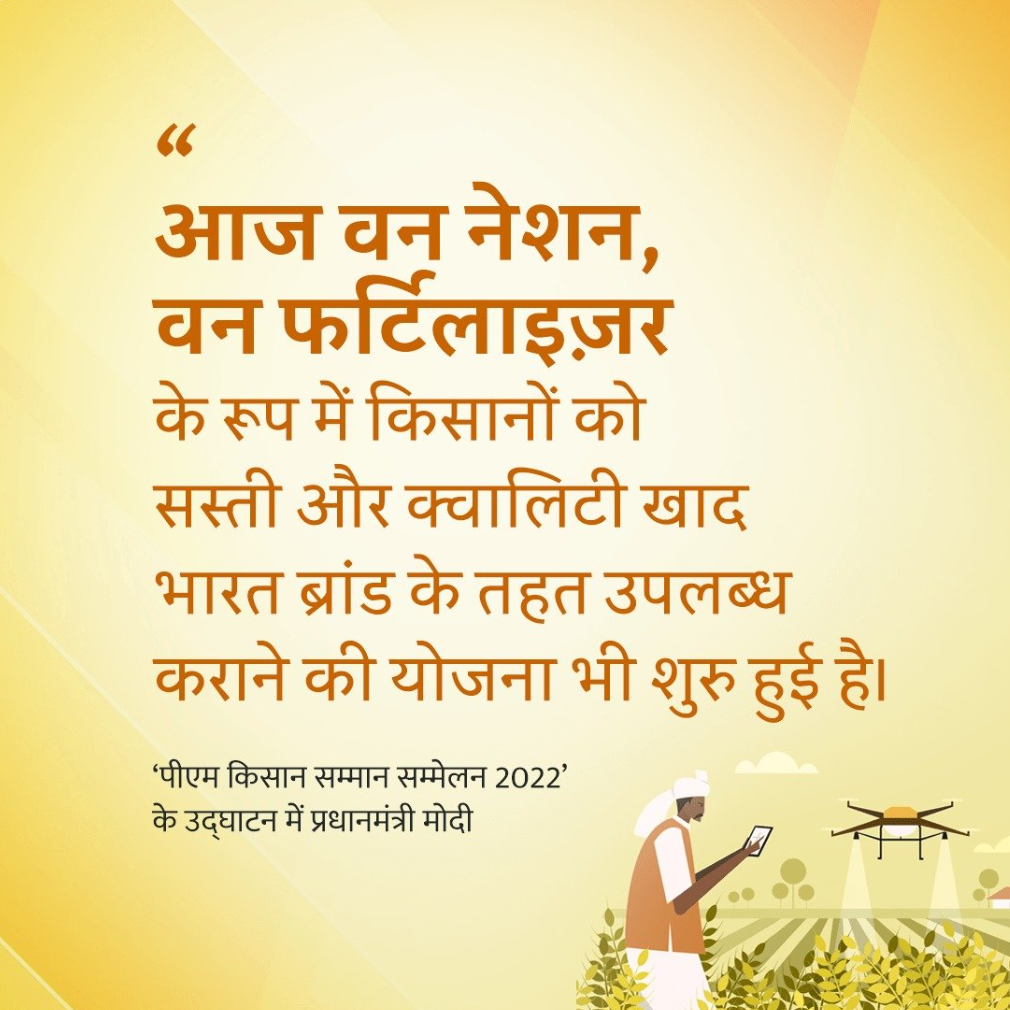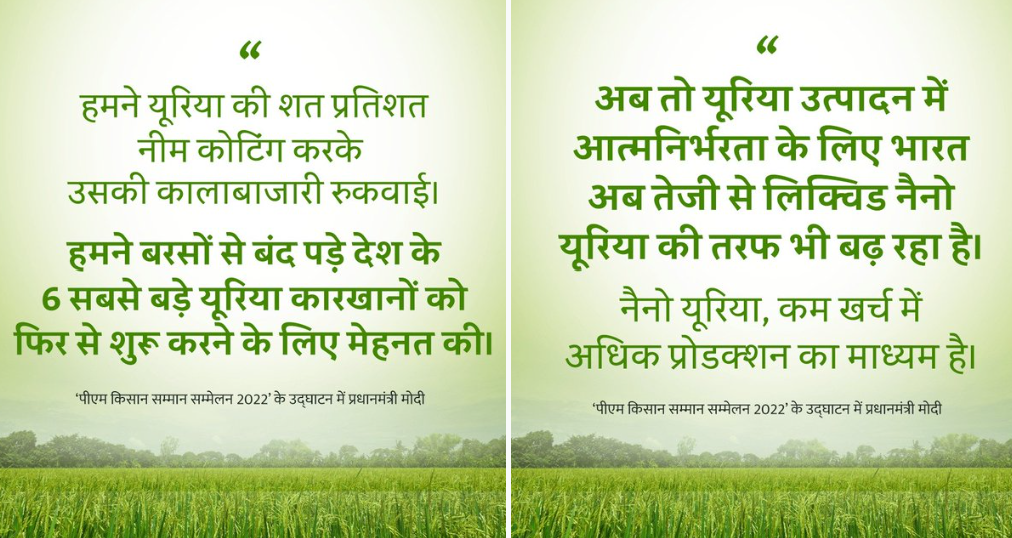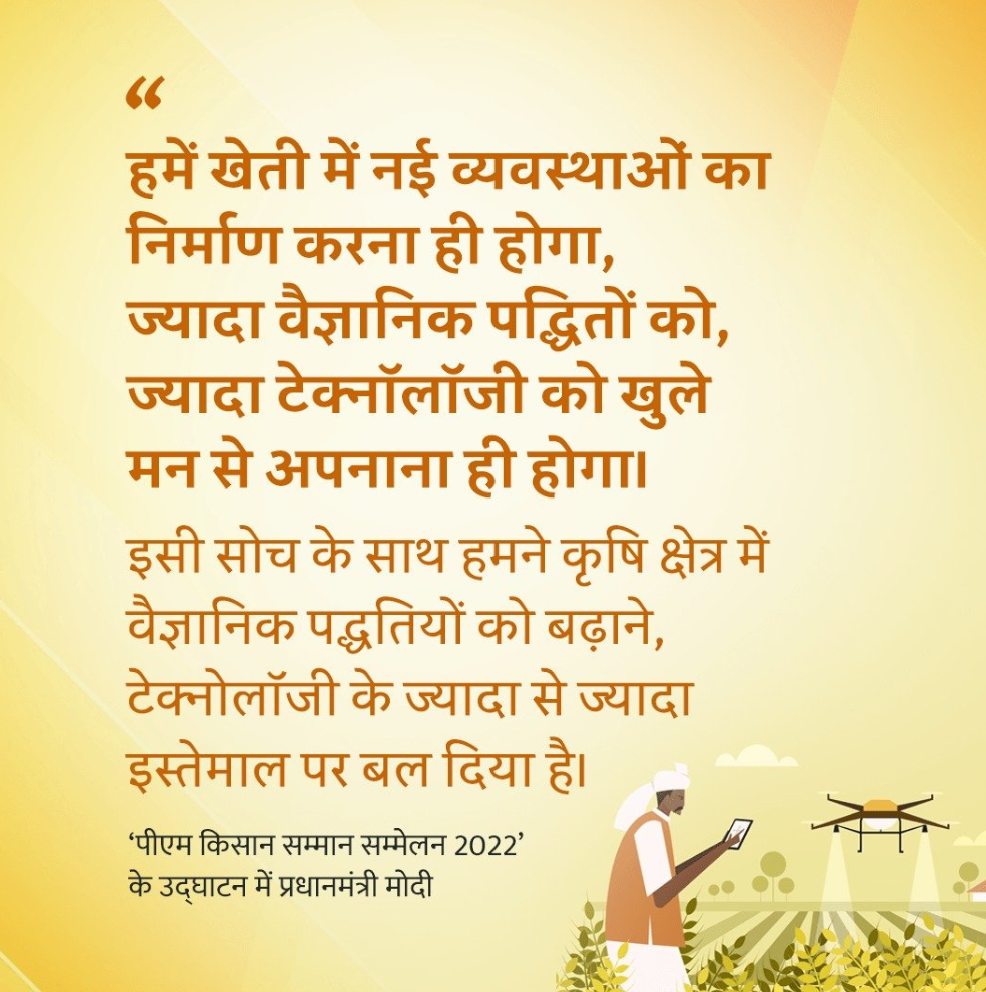One Nation One Fertilizer

One Nation One Fertilizer: Unifying our nation’s fertilizers through the introduction of a Single Brand for Fertilizers and Logo is a significant step towards streamlining the fertilization subsidy program known as the Pradhanmantri Bhartiya Janurvarak Pariyojna (PMBJP). This initiative aims to create a cohesive and efficient system for distributing fertilizers across the country, simplifying the process for farmers and enhancing the accessibility of these essential agricultural resources.



One Nation One Fertilizer In Brief
- The scheme’s primary objective is eliminating confusion concerning fertilizer quality and availability.
- In the past, retailers promoted specific brands for higher commissions, and manufacturers heavily advertised their products, leading to misconceptions about fertilizers.
- These misconceptions pushed farmers towards costlier alternatives, resulting in significantly higher fertilizer prices.
- The new scheme aims to reduce fertilizer costs and enhance their market availability.
- It achieves this by introducing a single unified brand for all fertilizers, reducing the need for cross-country transportation and thereby lowering freight costs.
- Fertilizer manufacturers are now mandated to use the “Bharat” brand name for their products.
- They can advertise their brand, name, logo, and relevant product information on one-third of their fertilizer bags.
- The remaining two-thirds of the bag’s space must prominently display the “Bharat” brand and the logo of the “Pradhanmantri Bharatiya Jan Urvarak Pariyojana.”
- This initiative ensures a more streamlined and standardized fertilizer distribution approach, benefiting farmers and consumers.
Background of One Nation One Fertilizer
Before introducing the One Nation One Fertilizer scheme, the government bore substantial subsidy expenses, covering roughly 80-90% of Urea’s and 66% of DAP’s costs. Despite these subsidies, the outcomes could have been more satisfactory.
During this time, various companies marketed similar nutrient products under different brand names, leading to confusion among consumers. Additionally, the transportation of these fertilizers involved significant costs as they were transported to various locations, further inflating the overall fertilizer prices. The One Nation One Fertilizer scheme was implemented to address these challenges and simplify the system.
More about One Nation One Fertilizer
Under this innovative “One Nation One Fertilizer” initiative, companies can only promote their name, brand, logo, and relevant product details on one-third of the fertilizer bags. The remaining two-thirds of the space must prominently display the “Bharat” brand and the Pradhanmantri Bharatiya Jan Urvarak Pariyojana (PMBJP) logo.
A unified brand name approach has been introduced for essential fertilizers such as UREA, Di-Ammonium Phosphate DAP, Muriate of Potash (MOP), and Nitrogen Phosphorus Potassium NPK, which will now be known as BHARAT UREA, BHARAT DAP, BHARAT MOP, and BHARAT NPK, respectively. This naming standard applies to all Fertilizer Companies, State Trading Entities (STEs), and Fertilizer Marketing Entities (FMEs).
Prime Minister Narendra Modi officially launched this “Single Brand for Fertilizers and Logo” initiative during the opening of the two-day event called the “PM Kisan Samman Sammelan 2022” on October 17th. This marks a significant step toward creating a cohesive and standardized system for fertilizers nationwide.
Purpose of this One Nation One Fertilizer Scheme
This initiative aims to standardize fertilizer brands throughout India, regardless of the manufacturing company, addressing various issues.
Its primary objective is to ensure everything is clear concerning fertilizer quality and availability. Retailers pushed certain brands for higher commissions in the past, and manufacturers promoted their products through targeted advertising campaigns. This practice led to misconceptions about fertilizers, compelling farmers to opt for costlier alternatives, ultimately driving up fertilizer prices significantly.
The new scheme is anticipated to reduce fertilizer costs and boost their availability in the market. Creating a single brand for all fertilizers will minimize the cross-country transportation of these products, resulting in substantial freight subsidies. This move will reduce competition among manufacturers and ensure an ample supply of fertilizers across India, thus unifying fertilizer brands nationwide.
Under this rule, fertilizer manufacturers must market their products under “Bharat.” They can advertise their brand, name, logo, and other pertinent product details on one-third of their fertilizer bags. This approach promises a more streamlined and standardized system for fertilizers, benefitting both farmers and consumers.
Conclusion
In summary, the successful implementation of this scheme promises advantages such as uniformity, standardization, and fairness. However, it may pose challenges for manufacturing firms and suppliers as they must align with government brands exclusively. To sustain this initiative long-term, the government should consider setting a cap on the maximum subsidy amount for farmers, ensuring the scheme’s effectiveness reaches the grassroots level.
Way Forward for One Nation One Fertilizer
To optimize the benefits of this scheme, it is essential to maintain a comprehensive database that accurately identifies eligible beneficiaries. This data-driven approach will help ensure the scheme’s advantages are directed towards the intended recipients. Additionally, since the government is offering subsidies, it is prudent to establish limitations on the quantity of fertilizers farmers can purchase during specific farming seasons, thus ensuring equitable distribution and resource allocation.
UPSC CSE Prelims PYQ
With reference to chemical fertilizers in India, consider the following statements: (2020)
- At present, the retail price of chemical fertilizers is market-driven and not administered by the Government.
- Ammonia, which is an input of urea, is produced from natural gas.
- Sulphur, which is a raw material for phosphoric acid fertilizer, is a by-product of oil refineries.
Which of the statements given above is/are correct?
(a) 1 only
(b) 2 and 3 only
(c) 2 only
(d) 1, 2 and 3
Ans: (b)
